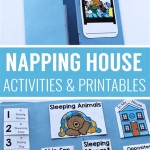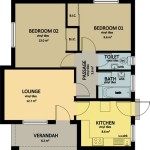Master Bedroom Floor Plan With Dimensions
A well-designed master bedroom provides a sanctuary for relaxation and rejuvenation. Careful planning, including precise dimensions, ensures the space functions effectively and accommodates desired furniture and features. This article explores the importance of a master bedroom floor plan with dimensions and provides guidance for creating one.
A floor plan serves as a visual representation of the layout and dimensions of a room. It provides a roadmap for furniture placement, electrical outlet placement, and overall space utilization. For a master bedroom, this plan is crucial for maximizing comfort and functionality.
Including dimensions in the floor plan is paramount. These measurements offer specific guidelines for furniture selection and placement, ensuring pieces fit comfortably within the available space. Dimensions also aid in visualizing traffic flow and ensuring adequate clearance around furniture.
Several key dimensions should be included in a master bedroom floor plan. Overall room dimensions, including length and width, provide a foundational understanding of the available space. Wall lengths should be individually marked to facilitate accurate furniture placement. Window and door placements, including their dimensions, influence furniture arrangements and traffic flow. Finally, the locations and sizes of closets and built-in features are essential for optimizing storage solutions.
Determining the desired bed size is a critical starting point for planning a master bedroom layout. Standard bed sizes, such as king, queen, full, and twin, each have specific dimensions that impact the surrounding space. The bed size influences the scale of other furniture pieces and the overall feel of the room.
Beyond the bed, other common furniture pieces within a master bedroom include nightstands, dressers, chests, and seating areas. Each of these requires careful consideration in the floor plan. Adequate space for movement around the bed and other furniture is essential. Placement of nightstands should allow easy access from the bed, while dressers and chests require sufficient clearance for drawers to open fully. If space allows, incorporating a seating area can enhance the room's functionality and provide a dedicated space for relaxation.
Traffic flow considerations are integral to a functional master bedroom layout. The pathway from the door to the bed and other areas of the room should be clear and unobstructed. Adequate space around furniture ensures ease of movement and minimizes the risk of tripping. The placement of doors and windows significantly influences traffic patterns and should be taken into account during the planning stages.
Storage solutions play a vital role in maintaining an organized and clutter-free master bedroom. Closets, whether walk-in or reach-in, should be incorporated into the floor plan with their dimensions clearly marked. This allows for efficient planning of shelving, hanging rods, and other storage components. In addition to closets, built-in shelves or drawers can provide valuable storage space for books, clothing, and other personal items.
Lighting considerations are an important aspect of master bedroom design. The floor plan should indicate the placement of ceiling lights, wall sconces, and any other lighting fixtures. Placement of windows should also be considered for natural light optimization. Strategically placed lighting enhances both functionality and ambiance within the space.
Utilizing design software or online tools can significantly aid in creating a detailed master bedroom floor plan with dimensions. These tools often offer pre-drawn furniture templates and allow for easy manipulation of room dimensions. They provide a visual representation of the space, simplifying the planning process and allowing for experimentation with different furniture arrangements.
Several sample floor plans with dimensions can serve as inspiration and offer practical layout ideas. A 12' x 14' master bedroom can comfortably accommodate a king-size bed with nightstands, a dresser, and a small seating area. A 10' x 12' room might be better suited for a queen-size bed and a smaller dresser to maximize space. A 14' x 16' master bedroom offers more flexibility for larger furniture pieces and potentially a walk-in closet.
Working with a professional interior designer can provide valuable expertise in creating a master bedroom floor plan that meets specific needs and preferences. Designers can offer guidance on space planning, furniture selection, and overall design aesthetics. They can also assist with incorporating specific features, such as built-in storage solutions and customized lighting plans.
By carefully considering the dimensions and layout of the master bedroom, individuals can create a space that is both functional and aesthetically pleasing. A well-designed floor plan, incorporating dimensions, ensures efficient space utilization, facilitates furniture placement, and promotes a comfortable and relaxing atmosphere.

Master Bedroom Floor Plans Types Examples Considerations Cedreo

Master Bedroom Floor Plans An Expert Architect S Vision

9 Tips To Consider When Planning Your Bedroom Layout

Master Bedroom Floor Plans An Expert Architect S Vision

Pin On Decor Bedroom

Master Bedroom Floor Plan Cadbull

Master Bedroom Floor Plans Types Examples Considerations Cedreo

Master Bedroom Floor Plans An Expert Architect S Vision

Master Suite Updated Plans Erin Kestenbaum

Pin On 260








